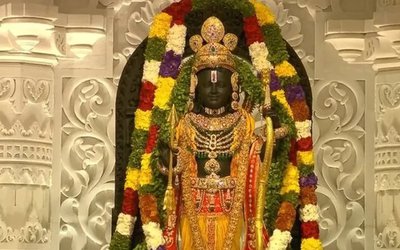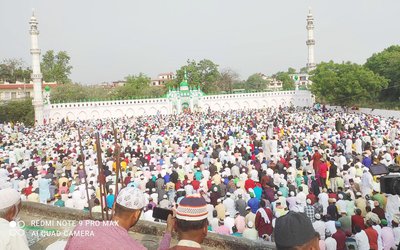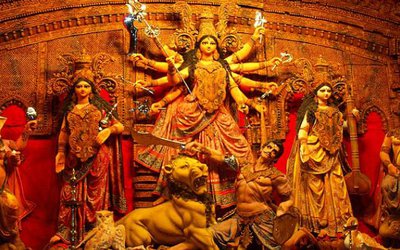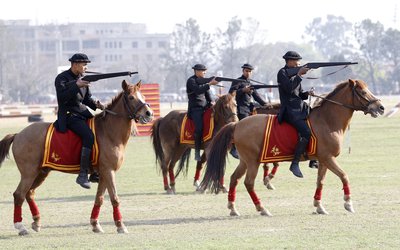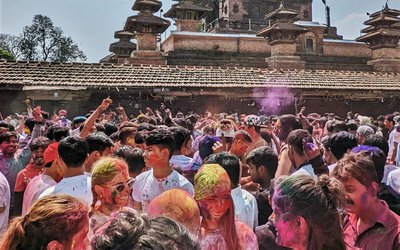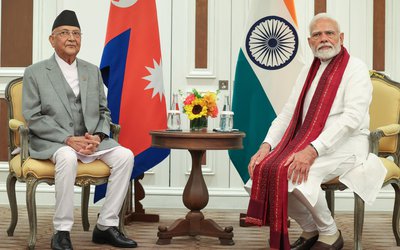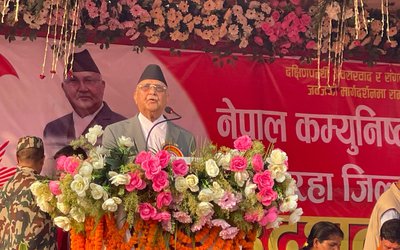
Hindus across Nepal and India observed Laxmi Puja on the third day of Tihar festival that began from Monday.
People worshiped Goddess Laxmi in the evening wishing for prosperity in personal life as well as business on this day also called Gai Tihar. People celebrate with much enthusiasm by lighting their houses, singing, dancing and merry-making.
Tihar festival, which is also called Yama Panchak or Deepawali is observed for five days. Also known as the festival of lights, people celebrate Tihar by lighting their houses with butter lamps.
Yama, the God of death is also worshiped in this festival. The relationship of Yama with his sister is marked during the festival which has a special significance in fostering love and respect among brothers and sisters.
Likewise, a small hillock made out of cow dung (representative of Govardhan Parbat) is worshipped on the fourth day of the festival called Govardhan Puja. People from the Newar community celebrate the fourth day of Yama Panchak as Mha Puja (worship of oneself). The day is also the beginning of Nepal Sambat calendar.
The fifth or the last day of Tihar is Bhai Tika — the day when brothers receive Tika from their sisters and vice versa. The auspicious hour for Bhai Tika this year is 11:55 am on Friday, November 9.
During the festival, people decorate their houses with colourful lights, flowers and oil lamps. They also cook and eat various delicacies, including sweets and sel roti, a traditional Nepali food made from rice flour, in the shape of a ring.
Playing Deusi-Bhailo and worshipping various animals and birds as parts of nature are significant aspects of this festival.
Diwali 2018
It is also known as Diwali which is here and celebrations are in full swing. Streets are filled with colourful lights and diyas, tables are laden with sumptuous food and cards for teen patti are already being dealt.
Diwali generally falls on the darkest new moon night that is also known as Amavasya. According to the Hindu, Lunisolar calendar, it falls in the month of Kartika, which is usually between mid-October and mid-November.
Generally, people clean their homes and office spaces before Diwali and then decorate it with lamps, lights, marigold flowers, mango or banana leaves and rangolis. People also invest in gold and silver and also buy the finest ethnic wear for Lakshmi puja. Some even keep a day-long fast on the day of Lakshmi puja.



- Senior Energy Expert Adhikari Resigned Following Differences With Minister
- Apr 09, 2025
- Considering the return of monarchy is simply a daydream: PM Oli
- Apr 09, 2025
- Weather Forecast: Brief Rain In Kathmandu, Pokhara And Many Places Across Nepal
- Apr 09, 2025
- RPP Protest in Balkhu, President Lingden Address
- Apr 08, 2025
- “We Are not pro-Beijing or pro-Delhi” PM Oli
- Apr 08, 2025
